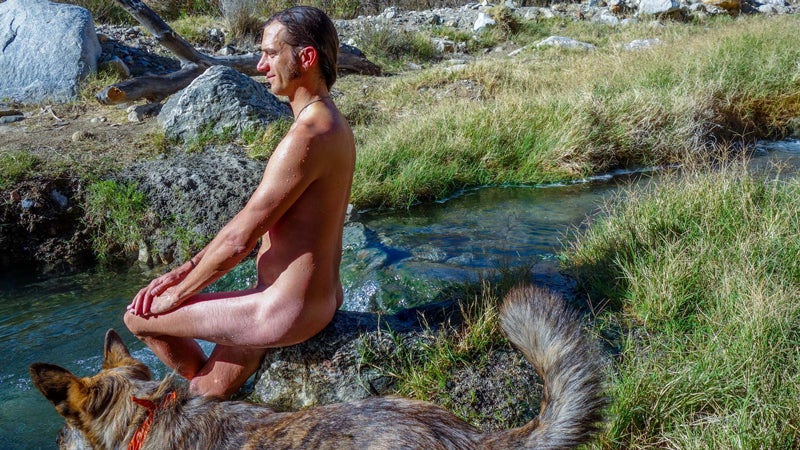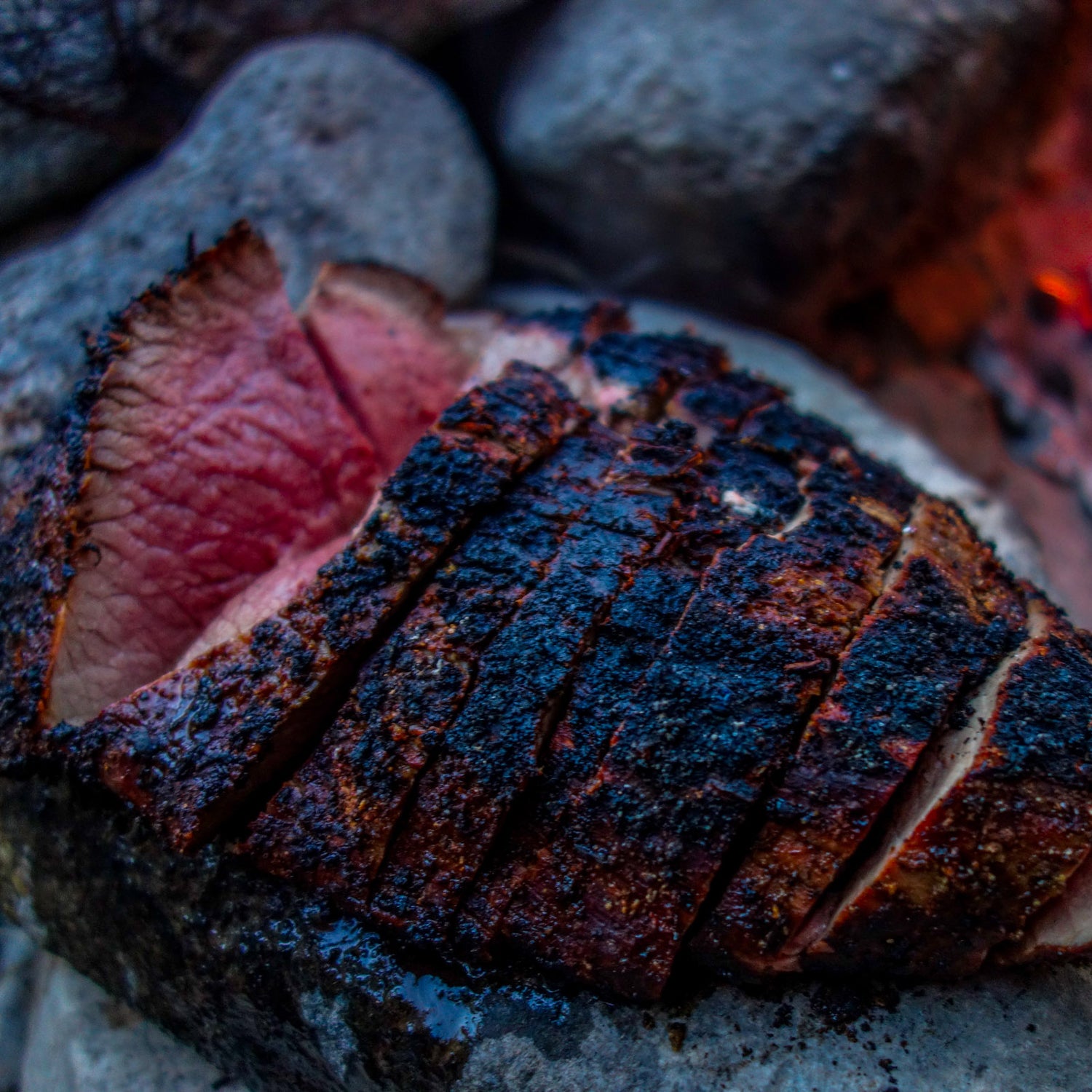Forget freeze-dried backpacking meals. For a 40-mile trip over Christmas, my friends and I used a remote hot spring to sous-vide this 10 lbs elk round. Not only was it the best meal any of us had eaten outdoors, it was probably our best Christmas dinner ever, full stop. Here’s how you can do the same.
“Sous-vide” is French for “under vacuum” and refers to the process of cooking food in an airtight container held in a water bath held at constant temperature. Steak aficionados have discovered that this method produces the juiciest, most tender steaks possible. And it can be used to cook a variety of other foods too. Vegetables, fish, eggs…you name it.
Because the temperature of the water only needs to be equivalent to the desired temperature of the food being cooked—130°F for a medium-rare steak—it occurred to me that one of the many hot springs found throughout California could provide a suitable source of hot water held at a stable temperature. The hottest of them, Sespe Hot Springs, is located in a neat wilderness area just a two-hour drive north of Los Angeles. With a handful of friends pestering me to arrange a trip, plenty of time off over Christmas, and suitably cold weather to make the high desert environment appealing, this seemed like the perfect time to test my theory.
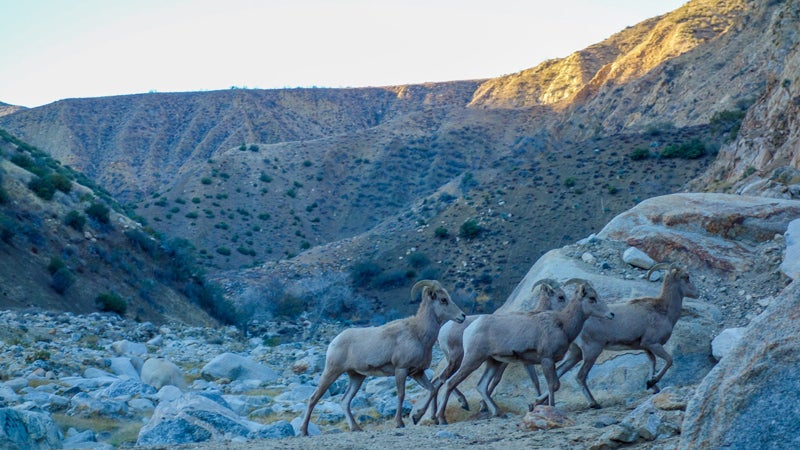
At their source, 20 feet up a cliff deep in the Sespe Wilderness, these hot springs measured 195°F on our meat thermometer. They spill down cliffs, forming a steamy creek that runs through the valley floor. Pools along the way provide soaking opportunities; you just walk downstream until you find one that doesn’t feel like it’ll melt the flesh off your bones. They also provide a reliable source of water in otherwise arid terrain, attracting the bears, mountain lions, and pacific hybrid deer that call this area home. That reliable water source and the steep cliffs that surround it also make an ideal habitat for bighorn sheep. A herd of 31 calls this valley home; no small feat considering they were jettisoned from helicopters during a windstorm during an airborne reintroduction attempt 30 years ago.
��’v�� and provided before. You’re only able to access the area on foot or horseback.
At home, sous-vide relies on some fairly expensive equipment. Outdoors, all you really need is a source of 130°F water, a couple heavy duty Ziplock freezer bags and a cheap meat thermometer. Another advantage for the backpacker: because of the relatively low temperature of the cooking medium, it’s actually fine if you start with the meat partially frozen. I pulled the elk round out of my deep freeze just before hopping in the car and, two nights later, it had just finished defrosting.
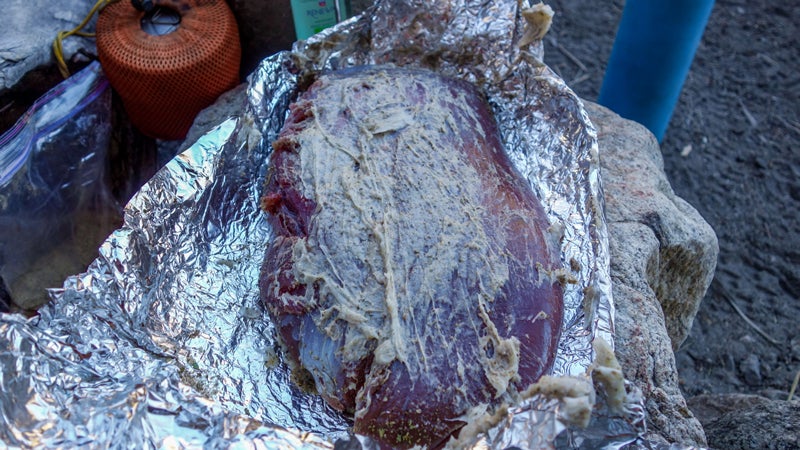
I also brought about half a cup of rendered duck fat and some steak rub—garlic powder, salt, and pepper—I had lying around and rubbed the elk thoroughly in this mixture prior to cooking it. You probably don’t need to do this for fatty beef, but game meat is notoriously lean, so a little extra fat helps keep it moist and tender. A good quality butter would work just as well.
You’ll see a variety of expensive, complicated vacuum sealers marketed for sous-vide cooking. If you already have one, vacuum sealing, then freezing your meat before departing on a trip might be a good, leak-free way of transporting it. But you don’t need to be this fancy to cook in a hot spring. The idea is just to get the air out of the bag, then keep the hot water from getting to the meat. To get the air out of a Ziploc, put the meat in it, seal the bag most of the way, then immerse it in warm water with only the open portion sticking out. The pressure of the water will force the excess air out and you can then seal the bag fully and get on with cooking. I double bagged, just for extra peace of mind. Twenty miles from the car, you can’t really fall back on ordering a pizza.
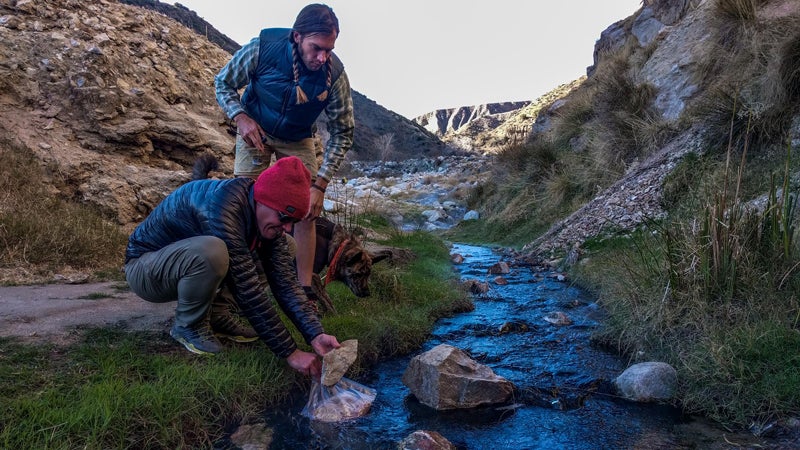
Another big advantage for camp chefs is that you can simply walk away once the meat is bagged and submersed. I put a rock on top of the elk to hold it underwater and walked back to camp to get the fire going, chase my dog around, and hang out with my friends.
Precise timing during the submersion phase is far from critical. Allow at least an hour for the meat to come up to temperature and for the connective tissue to have time to break down. But, don’t leave it in there all day. Serious Eats conducted and determined that one hour provides ideal results, but the steak doesn’t begin to break down and become too soft until the four hour mark. You’ve got plenty of wiggle room. With a piece of elk this thick, I left it in the water for two hours.
What’s going on inside the meat during that time is a gradual breakdown of connective tissue, transforming it from tough collagen to soft gelatin. Unlike high-temperature cooking methods, cell walls don’t burst and proteins don’t denature. So, combined with being sealed in with its own juices, the meat is allowed to remain extremely tender and moist, while achieving a perfectly even temperature throughout.
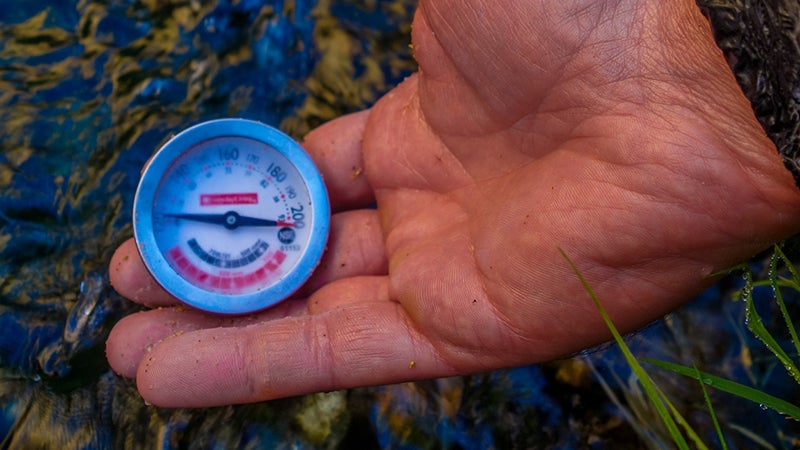
You could safely and enjoyably consume the meat at this point. Provided you’ve achieved at least that 130°F temperature (test with a meat thermometer), it will be thoroughly cooked and pasteurized. But, you’d be missing the flavors of seared meat’s if you did.
We served the elk with Jane Stady’s famous berry compote:
- 3 small shallots diced
- 2 tbsp butter
- 1 can of good cranberry sauce, provides gelatin
- 1/2 pint blueberries
- 1/2 pint blackberries
- 1/2 pint raspberries
- 1/2 pint stemmed and 1/4’d strawberries
- 1 blood orange or meyer lemon, zest and juice
- 1 sprig rosemary
- Salt, pepper, and/or sugar to taste
Saute shallots in butter. Add berries, rosemary, and citrus. Cook down till thick enough to coat the back of a spoon being mindful not to burn as the berries contain a lot of natural sugars. Remove rosemary. Salt/pepper/sugar can be tailored to taste depending if used for a sweet or savory dish.
While I had the elk submersed in the hot spring, I got a nice fire going, producing a solid bed of coals. We pulled the meat out of the water, de-bagged it, and then placed it directly on the coals. Provided they’re glowing red, you’ll be able to cook directly on them, with no grate, without the meat collecting ash. After two minutes on each side, we figured the elk was ready, pulled it onto a fire side rock, and sliced it up to serve. Ten pounds was more than enough for four hungry campers; our two dogs each got a slice for their Christmas dinner too.
As you can see, that sear was actually a little too long. I’d recommend erring on the side of too little time instead of too much. After all, the meat is already cooked by this point. But this also highlights the final advantage of cooking by hot spring: the meat was so tender and so juicy, that even the half-inch overcooked portion was still incredibly tasty. Not only does hot spring sous-vide produce juicer meat, but it’s also a more foolproof cooking method than fire.
